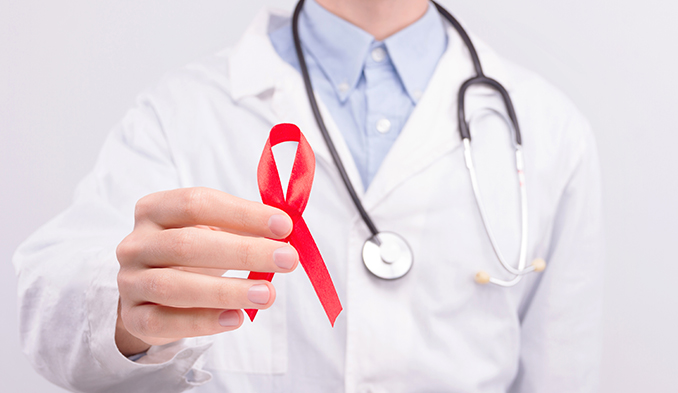-
What are the stages of melanoma recognition and treatment?
Stages and treatment of melanoma - let's look at the different stages of melanoma, which represent their different phases:
- Stage 0: Here the melanoma is called "in situ". It is localised only in the superficial layer of the skin and has not penetrated further inside. At this stage, there is almost no risk of melanoma spreading to other parts of the body in the patient.
- Stage I: In this case, the melanoma is invasive and penetrates the upper layer of the skin. It is subdivided into two subgroups (IA or IB) according to the depth of penetration and the presence of ulceration.
- Stage II: Here the melanoma is thicker and penetrates through the epidermis, reaching the thick layer of the skin (dermis). At this stage, there is a greater likelihood of the cancer spreading to other parts of the body.
- Stage III: Melanoma cancer cells spread to local lymph nodes and/or vessels, no matter the size of the malignancy. In order to verify whether the melanoma has spread to the lymph nodes, a sentinel lymph node biopsy is performed.
- Stage IV: This is the last stage. In this stage, the melanoma has spread through the blood to other areas in the body. It may have reached distant lymph nodes or distant sites on the skin and soft tissues. Organs such as the brain, gastrointestinal tract, bones, liver and lungs may also be affected.
-
What tests are needed to diagnose melanoma and what is their role?
There is currently no specific blood test that can be used to directly diagnose human melanoma.
The most studied prognostic biomarker in melanoma so far is S100B. In 1995, the first study investigating the clinical impact of serum S100B was published. It was found that an increase in its levels was associated with disease progression, while a decrease indicated a response to the therapy administered. Swiss and German medical guidelines recommend measuring S100B in the serum of patients with melanoma more than 1 mm thick.
LDH (lactate dehydrogenase) can be a prognostic factor in advanced stages of tumor. High levels of it in the blood are characteristic of patients with this type of cancer.
Patients with abnormally high LDH levels were significantly less likely to have a long life expectancy. There are studies available that confirm that blood LDH levels increase in advanced stages of the disease, especially in cases of liver metastases.
Serum LDH is the only molecular marker of melanoma in humans, part of the American Joint Committee on Cancer (AJCC) staging system, due to its high importance for accurate diagnosis and ease of diagnosis.
-
What are the latest innovations in melanoma treatment?
Currently, research is focused on developing different methods to affect specific mutations in melanoma cells. They also seek to create therapies that use the body's immune system to attack melanoma cells more effectively.
Immunotherapy and targeted therapy are two main methods that are used alone or in combination to treat the disease. These therapies have led to significant improvements in survival for patients with advanced melanoma in recent years.
In addition, clinical trials of the potential of peptide vaccines in the fight against melanoma are ongoing. These vaccines are being investigated for use in patients with localised and advanced melanoma, although this method of treatment is not yet officially recognised.
-
What are the different approaches to treating melanoma in its different stages?
Treatment for melanoma varies depending on the stages of the disease and a number of other factors. Let's look at the different treatment methods depending on the stage of the cancer:
- Stage 0: In most cases, surgical removal of the melanoma is performed.
- Stage I: Most often the patient undergoes surgery to remove the tumor and some of the surrounding healthy tissue.
- Stage II: Standard treatment involves surgery to remove the malignant growth and surrounding tissue. In addition, procedures such as sentinel lymph node biopsy and lymph node mapping may be performed. Interferon therapy may be recommended in some patients.
- Stage III: When surgical removal of stage III melanoma is possible, this is most often the preferred treatment. During the surgery itself, removal of affected lymph nodes may follow if necessary. The patient may be prescribed additional postoperative treatment by immunotherapy or targeted therapy to avoid recurrence of the disease.
- Stage IV: Treatment of unresectable stage III melanoma and stage IV melanoma usually includes immunotherapy and targeted therapy; in rarer cases, chemotherapy may also be used. In some cases, surgical removal or radiation therapy may be recommended to treat enlarged lymph nodes and smaller tumors already spread throughout the body. The treatment plan is individualized, with the treating physician taking into account each patient's specific circumstances.
-
Does liquid biopsy help detect biomarkers and treat melanoma?
Liquid biopsy provides the opportunity to analyze microscopic fragments of melanoma DNA, known as circulating tumor DNA. This is particularly useful in patients with advanced melanoma (stage IV) as it allows testing for the presence of specific mutations in the BRAF gene, such as BRAF V600K or BRAF V600E mutations.
This method of testing is used not only to detect mutations, but also to assess the response of patients to the prescribed treatment and to detect possible relapse, especially in those with a mutation in the BRAF gene.
It is important to note that liquid biopsy is not currently used as a method for early diagnosis of melanoma.
-
What is the probability of a successful cure in melanoma and how does it change as the disease progresses?
In the early stages of melanoma, the chances of survival after five years are 99%. However, this value decreases to 63% when the melanoma has spread to the lymph nodes. When the melanoma reaches the lungs, liver and other organs in the body, this value drops to 27%.










